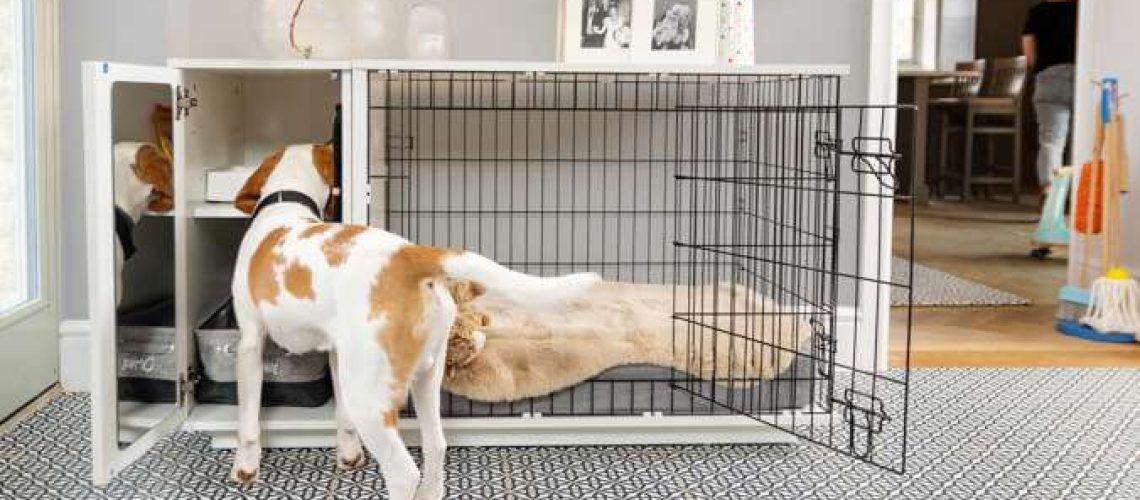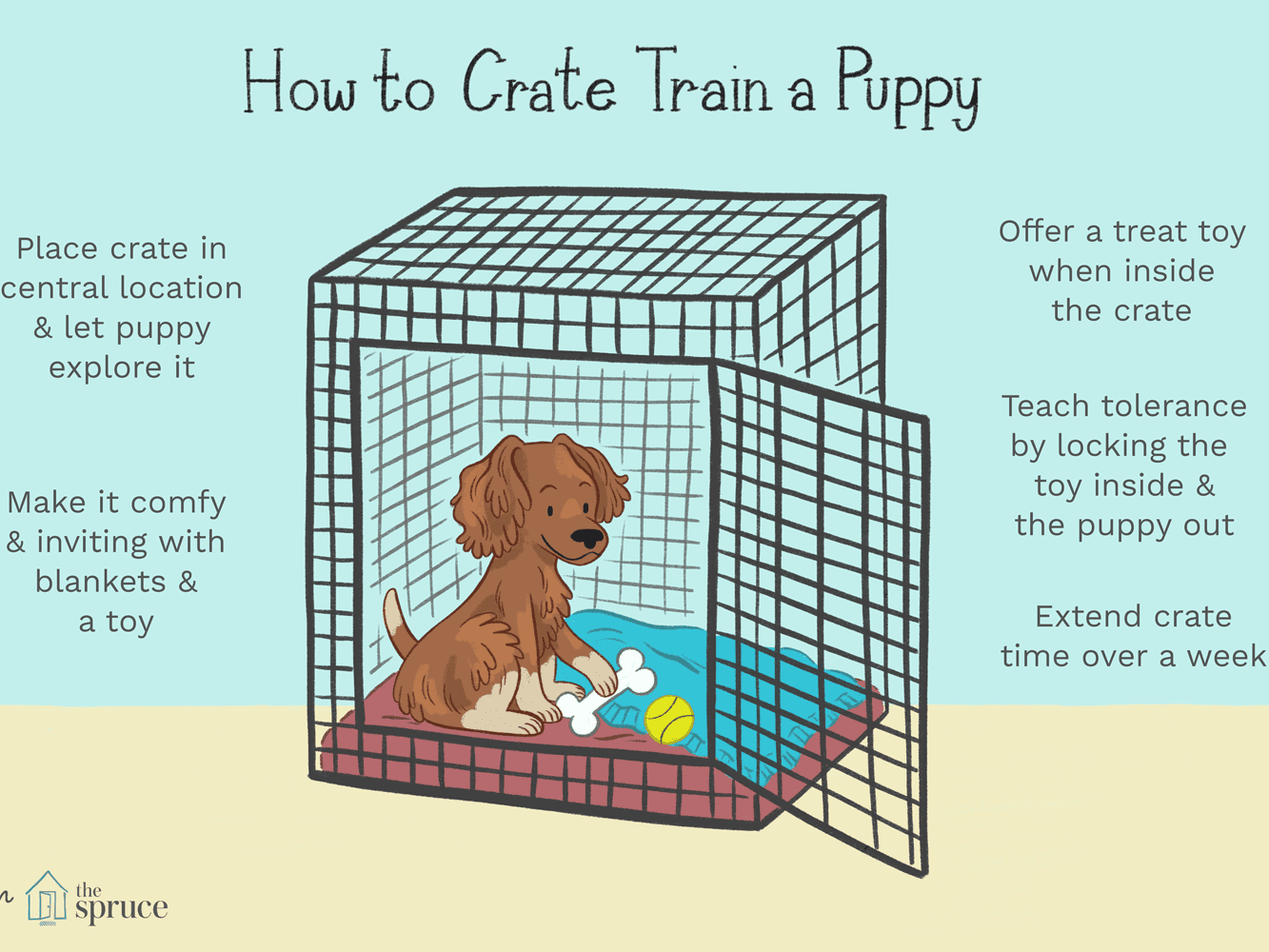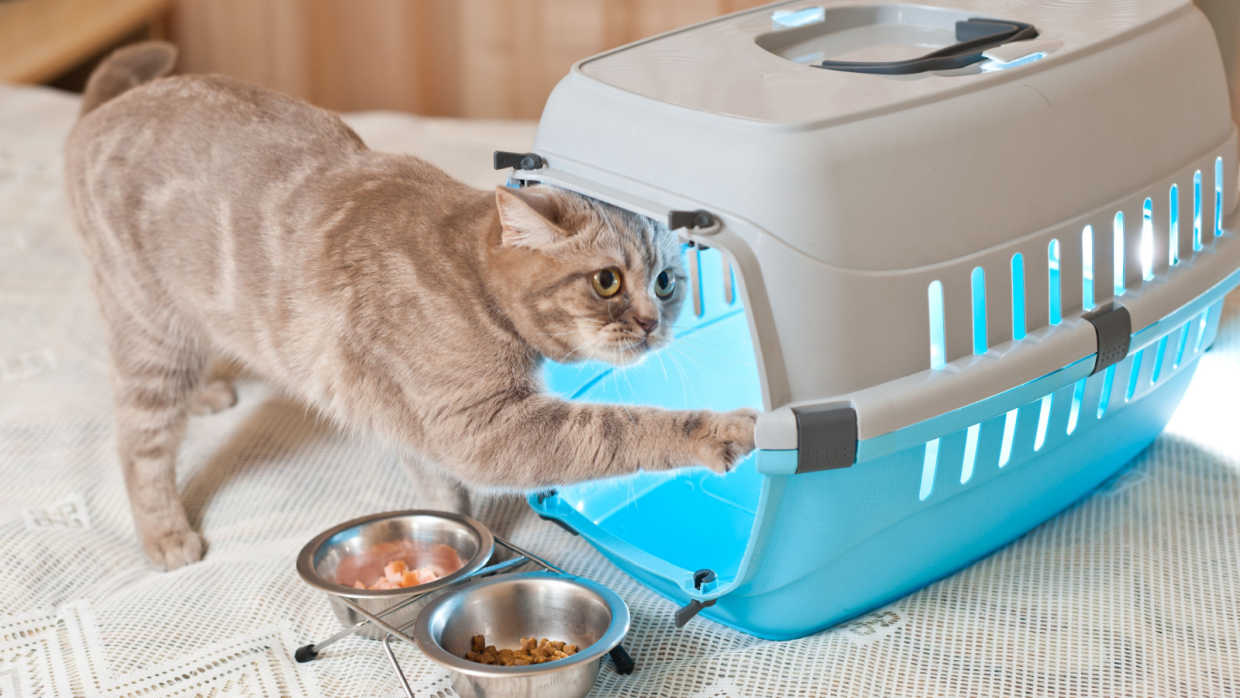Key Takeaways:
- Start slow and be patient: Crate training an older dog may take longer than training a puppy, so it's important to have patience and go at their pace.
- Make the crate comfortable: Ensure that the crate is cozy and inviting by adding soft bedding, toys, and treats to create a positive association with the crate.
- Use positive reinforcement: Reward your dog with treats or praise when they enter the crate voluntarily or remain calm inside. This will help them associate the crate with positive experiences.
- Gradually increase time spent in the crate: Begin by leaving your dog in the crate for short periods and gradually extend the duration. This helps them adjust to being confined without feeling anxious or stressed.
- Establish a routine: Create a consistent schedule for meals, bathroom breaks, exercise, and crate time. Dogs thrive on routine, so having a predictable schedule will make them feel more secure during crate training.
Are you struggling to get your older dog to behave while you're away from home? Do you come back to chewed furniture or accidents on the floor? If so, then learning how to crate train an older dog could be the key to a happier and more well-behaved furry friend. Crate training provides numerous benefits for both dogs and their owners. Not only does it help prevent destructive behavior and accidents, but it also creates a safe and comfortable space for your dog when you can't be there. By understanding the ins and outs of crate training, you can transform your dog's behavior and establish a strong bond based on trust and security. So, let's dive into the world of crate training and unlock the secrets to a harmonious home life with your beloved pooch.
What is crate training and why is it important for older dogs?
Crate training is a method of teaching your dog to view their crate as a safe and comfortable space. It involves gradually introducing your dog to the crate and rewarding them for positive behavior inside it. Crate training can be particularly beneficial for older dogs because it provides them with a designated area where they can feel secure and relaxed.
Older dogs may have different needs compared to younger ones, such as needing more rest or having difficulty controlling their bladder. A crate can help address these needs by providing a quiet and controlled environment where they can rest undisturbed. Additionally, crates can be useful for managing separation anxiety or preventing destructive behavior when you're not able to supervise your dog.
Choosing the right crate size for an older dog: Tips and tricks
When selecting a crate size for an older dog, it's important to choose one that allows them enough space to stand up, turn around, and lie down comfortably. Here are some tips to help you find the right size:
- Measure your dog's height from the floor to the top of their head while standing.
- Measure your dog's length from the tip of their nose to the base of their tail.
- Add a few inches to each measurement to ensure your dog has enough room.
- Avoid getting a crate that is too large as it may not provide the cozy feeling dogs crave.
Remember, every dog is unique, so it's essential to consider their specific needs when choosing a crate size. Consulting with a veterinarian or professional trainer can also provide valuable guidance in selecting the right crate size for your older dog.
Introducing an older dog to their crate: Step-by-step guide
Introducing an older dog to their crate requires patience and positive reinforcement. Here's a step-by-step guide to help you through the process:
Step 1: Familiarize your dog with the crate
Place the crate in an area where your dog spends time and leave the door open. Allow your dog to explore the crate at their own pace without any pressure.
Step 2: Make the crate inviting
Add soft bedding, toys, and treats inside the crate to make it more appealing. You can also feed your dog near the crate or place their favorite blanket inside to create a positive association.
Step 3: Encourage short stays in the crate
Gently coax your dog into the crate using treats or toys. Once they enter, praise them and reward them with a treat. Gradually increase the duration of their stay while ensuring they remain comfortable.
Step 4: Close and latch the door
Once your dog is comfortable spending time in the crate, start closing and latching the door for short periods while remaining nearby. Gradually increase the amount of time you keep them inside before opening it again.
Step 5: Gradually increase alone time
As your older dog becomes more accustomed to the crate, start leaving them alone for short intervals, gradually increasing the duration over time. This will help them associate being in their crate with positive experiences even when you're not around.
Making the crate cozy for your older dog: Tips and ideas
Making your older dog's crate cozy is essential for creating a welcoming environment that they'll enjoy spending time in. Here are some tips and ideas:
Choose comfortable bedding
Select soft and supportive bedding for your dog's crate. Opt for materials that are easy to clean and provide adequate cushioning, such as memory foam or orthopedic beds.
Add familiar scents
Place an item with your scent, such as a worn t-shirt or blanket, inside the crate. Your dog will find comfort in your familiar smell, which can help them relax and feel secure.
Create a den-like atmosphere
Cover the top and sides of the crate with a blanket or towel to create a cozy den-like space. This can help block out excess light and noise, creating a calming environment for your older dog.
Provide interactive toys
Include interactive toys or puzzle feeders in the crate to keep your older dog mentally stimulated during their time inside. This can also help distract them from any anxiety they may experience when initially adjusting to the crate.
By making the crate cozy and inviting, you'll encourage your older dog to view it as their own personal retreat where they can feel safe and relaxed.
Encouraging your older dog to willingly enter the crate: Effective techniques
Getting your older dog to willingly enter their crate is crucial for successful crate training. Here are some effective techniques to encourage them:
Positive reinforcement
Reward your dog with treats, praise, or playtime whenever they voluntarily enter the crate. Associating positive experiences with going inside will make them more inclined to do so willingly.
Create a feeding routine
If possible, feed your older dog their meals inside the crate. This will reinforce positive associations with being in the crate and make it a routine part of their daily activities.
Use a cue or command
Teach your dog a specific cue or command, such as "crate" or "kennel," to signify going into the crate. Consistently using this cue when they enter will help them understand what you expect from them.
Make it a gradual process
If your older dog is hesitant about entering the crate, take small steps towards the goal. Start by rewarding them for approaching the crate, then for putting one paw inside, and gradually work up to full entry.
By using these techniques consistently and patiently, you can encourage your older dog to willingly enter their crate without any resistance or fear.
How long should you leave an older dog in their crate during training sessions?
The duration that an older dog should spend in their crate during training sessions depends on several factors, including their age, physical condition, and individual needs. Here are some general guidelines:
- Puppies: Puppies have limited bladder control and higher energy levels. They may need to be taken out for bathroom breaks every 2-4 hours and require more frequent exercise and playtime outside of the crate.
- Adult dogs: Adult dogs can typically stay in their crates for longer periods, usually between 4-6 hours. However, it's essential to consider their exercise needs and ensure they have regular opportunities for bathroom breaks and physical activity.
- Elderly dogs: Older dogs may have specific health conditions that require more frequent bathroom breaks or shorter periods of confinement. It's crucial to consult with a veterinarian to determine what is appropriate for your older dog's individual needs.
Remember that crate training should not be used as a substitute for regular exercise, mental stimulation, and human interaction. It's essential to balance crate time with plenty of opportunities for your older dog to stretch their legs, engage in playtime, and receive social interaction.
Mistakes to avoid when crate training an older dog: Common pitfalls
When crate training an older dog, it's important to avoid common mistakes that can hinder the process. Here are some pitfalls to watch out for:
Using the crate for punishment
Avoid using the crate as a form of punishment or confinement for extended periods. This can create negative associations with the crate and make your older dog resistant to entering it willingly.
Leaving them inside for too long
Ensure you do not leave your older dog inside the crate for excessive periods without bathroom breaks or exercise. This can lead to discomfort, anxiety, or accidents inside the crate.
Rushing the process
Crate training takes time and patience. Avoid rushing the process by forcing your older dog into the crate or leaving them alone in it before they are comfortable. Gradual and positive reinforcement is key.
Neglecting physical and mental stimulation
Avoid relying solely on the crate as a means of confinement without providing adequate physical exercise and mental stimulation outside of it. Dogs need regular opportunities to explore, play, and interact with their environment.
By avoiding these common mistakes, you'll ensure that your older dog has a positive experience during crate training and develops a healthy association with their crate.
In conclusion, crate training can be a helpful way to teach an older dog to feel safe and secure in their crate. With patience, consistency, and positive reinforcement, your older dog can learn to see their crate as a comfortable space they enjoy spending time in.
Can an older dog learn to be crated?
Crate training is suitable for dogs of all ages, including puppies, adult dogs, and seniors. However, it may require additional patience when working with adult or senior dogs. According to Bloom, every dog can eventually learn to love the crate, even if they initially dislike it.
How long does it take to crate train an older dog?
It can take weeks or even months to acclimate your dog to a crate. Adult dogs who have never been crated before might take the longest to adjust. A good starting point is to place the crate in your house where the dog can see it, smell it, and explore the inside if they want to.
How do you train an adult dog to use a crate?
Provide a verbal cue, like saying "crate," to signal your dog to enter. Use a treat to guide them towards the inside of the crate and once they enter, praise them, give them the treat, and close the door. Stay near the crate for a few minutes and then leave the room for a short period of time.
Should older dogs sleep in a crate?
When advising people whose dogs are experiencing regression in housetraining or shorter sleeping periods at night, we typically suggest the use of a crate.
How do I get my dog used to being crated?
To coax your dog into entering the crate, start by placing some treats near the crate, just inside the door. Gradually, move the treats further inside the crate to entice your dog to go all the way in. If your dog doesn't enter fully to retrieve the treats initially, it's okay. Do not push or pressure her to enter. Repeat this process until your dog willingly walks into the crate to receive a treat.
How do you crate train a dog that hates it?
To encourage your dog to go into the crate, place some delicious treats both inside and around it. If your dog doesn't want to enter the crate, don't force them. Just keep throwing treats inside until they feel comfortable enough to go in.

















